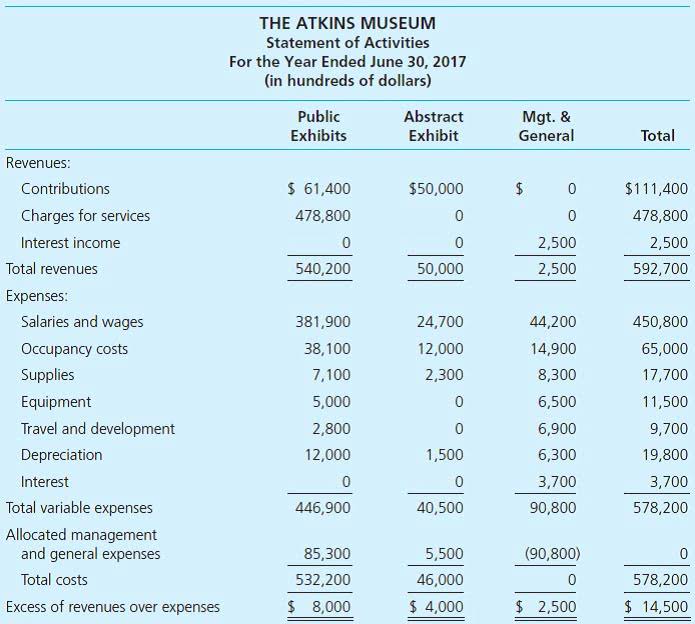
Direct materials – cost of items that form an integral part of the finished product. Examples include wood in furniture, steel in automobile, water in bottled drink, fabric in shirt, etc. These insights will thus help you in saving materials, labor, and other resources. In fact, sometimes, just by making a few small changes to your routing manufacturing, you will be able to have significant savings. On the other hand, if you price your products too high, then you might risk missing out on potential sales and market share. This will affect your revenue while risking the success of your company.
Examples of Nonmanufacturing Overhead Costs
- For over twenty-five years their time-tested technology has been giving businesses the edge over their competition.
- Raw materials are critical in manufacturing because they are used to create the final product.
- They are impacted by different factors and thus their appropriate categorization is important.
- You must manage production cycles, resource allocations, safety stock, reorder points, and much more to achieve this.
- Manufacturing cost calculation gives an accurate view of the costs allowing companies to eliminate irrelevant costs and optimize resource utilization to boost profitability.
- For example, if a business knows its manufacturing cost, it can set a price to cover its costs and make a profit.
- For instance, if some raw materials are driving up costs, manufacturers can negotiate with other suppliers who may be willing to supply these materials at a lower cost.
The quality of raw materials can be the difference between a great product and a terrible one. If you’re manufacturing something that will be used daily, like a kitchen knife or a pair of shoes, you want to ensure that it will last for as long as possible. If there is a high demand for a particular raw material, then this will increase its price. Because if more people want it, there is less available, so the price goes up. If a product needs a specific raw material and there are not enough supplies, then this will mean that the manufacturer has to pay more money to get hold of it.
- Period costs are closely related to periods of time rather than units of products.
- Fluctuation of costs is yet another challenge that makes it harder to calculate manufacturing costs accurately, according to Fabrizi.
- Nonmanufacturing costs consist of selling expenses, including marketing and commission expenses and sales salaries and administration expenses, such as office salaries, depreciation and supplies.
- For example, many countries now require that food products be tested for harmful chemicals before selling them.
- The relevance of costing to manufacturing companies is highly important to running an efficient and successful business.
Labor Costs Are Increasing- Manufacturing cost

As the manufacturing process involves raw materials and finished goods, all of these are considered assets. The materials that are yet to be assembled /processed and sold are considered work-in-process or work-in-progress (WIP) inventory. Let’s go through all the steps for calculating total manufacturing costs. Manufacturing costs, also called product costs, are the expenses a company incurs in the process of manufacturing products. For example, fixed costs for manufacturing an automobile would include equipment as well as workers’ salaries. Taxes levied by the government or royalties owed by natural resource-extraction companies are also treated as production costs.
More Regulations Require Companies To Spend Money- Manufacturing cost
These costs are represented during a period of time and are not calculated into the cost of good sold. Nonmanufacturing costs consist of selling expenses, including marketing and commission expenses and sales salaries and administration expenses, such as office salaries, depreciation and supplies. Even though nonmanufacturing overhead costs are not product costs according to GAAP, these expenses (along with product costs and profit) must be covered by the selling prices of a company’s products. In other words, selling prices must be large enough to cover SG&A expenses, interest expense, manufacturing overhead, direct labor, direct materials, and profit. Period costs include selling expenses and administrative expenses that are unrelated to the production process in a manufacturing business.
Another example is if you were making a t-shirt, the cotton and thread would be considered direct materials. They form part of inventory and are charged against revenue, i.e. cost of sales, only when sold. All manufacturing costs (direct materials, direct labor, and factory overhead) are product costs. Thus, for example, nails and glue holding a wooden cabinet together are indirect materials non-manufacturing costs include called consumables, and thus their cost will be added under indirect costs to your total manufacturing costs. Production costs refer to all of the direct and indirect costs businesses face from manufacturing a product or providing a service. Production costs can include a variety of expenses, such as labor, raw materials, consumable manufacturing supplies, and general overhead.
- If neither of these options works, producers may have to suspend their operations or shut down permanently.
- You should then assess if they are aligning at the end of the set time period or not and decide the necessary course of action to maintain or rectify the situation.
- Manufacturing overhead includes the indirect materials and indirect labor mentioned previously.
- Direct manufacturing costs are those that are directly related to the creation of the product itself.
- The total direct manufacturing costs are usually expressed as a percentage of the sales price for each product.
- Here’s a hypothetical example to show how this works using the price of oil.

Direct costs refer to everything that is spent on the bulk of the manufacturing process. This could be material costs (for example, raw materials) and time costs (for example, staff wages). For any costs to be considered as direct costs, they must play a physical role in assembly or production. By calculating manufacturing costs, companies can clearly understand the true cost of making a product. Based on this information, the company’s management can add a markup to determine competitive selling prices for their products. When doing a physical inventory, you must know how to calculate the direct material costs.
Some Examples of Non-manufacturing Costs
SMe Software’s complete Manufacturing Management Software is highly configurable, completely integrated business software for the small to mid-size manufacturer. Direct materials are those materials used only in making the product and there is a clear, easily traceable connection between the material and the product. For example, iron ore is a direct material to a steel company because the iron ore is clearly traceable to the finished product, steel. Labor costs are one of the highest contributors in significantly driving up your total manufacturing costs. Thus, it makes sense for your business to cut back on this area and thus make your manufacturing lean.
